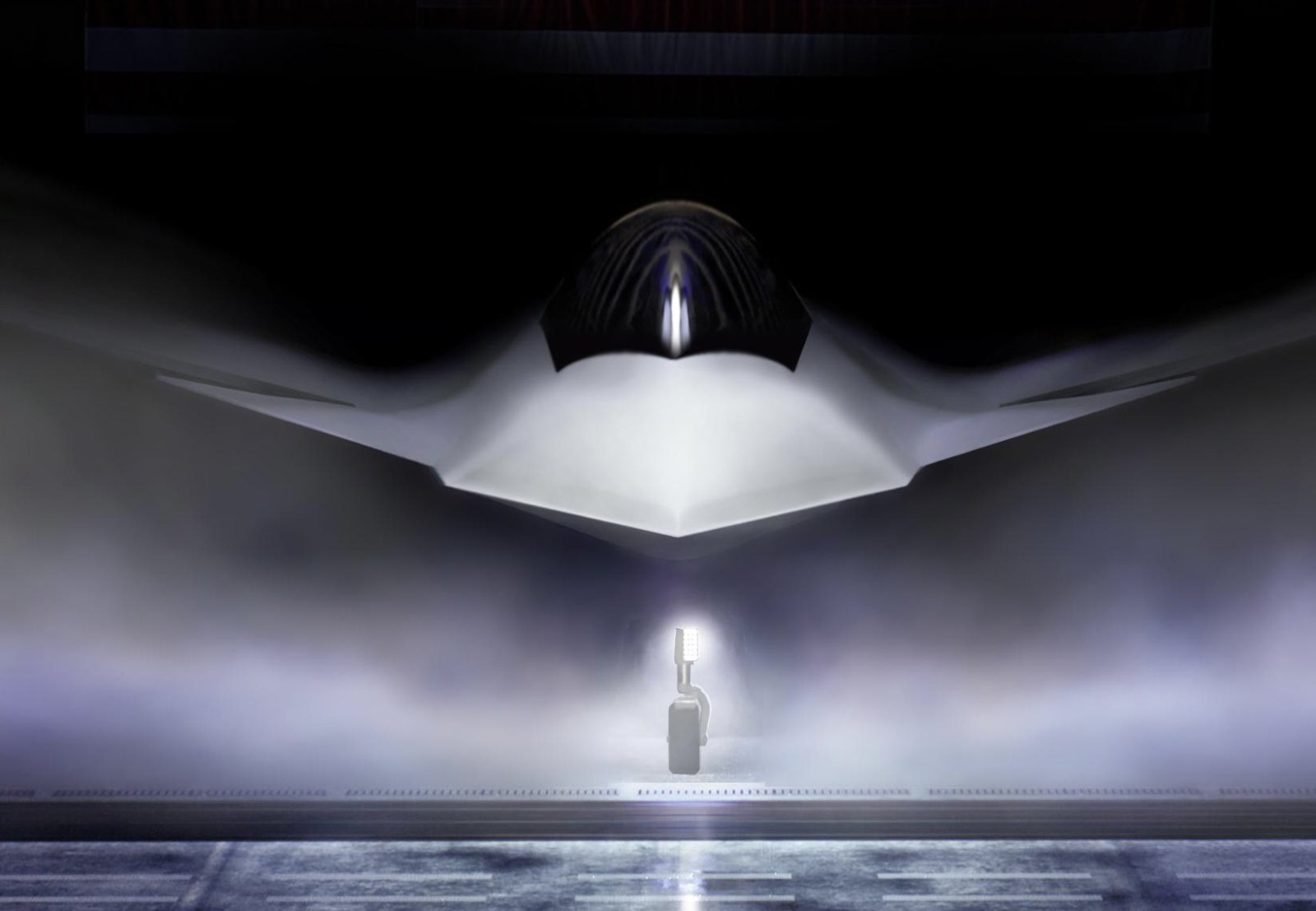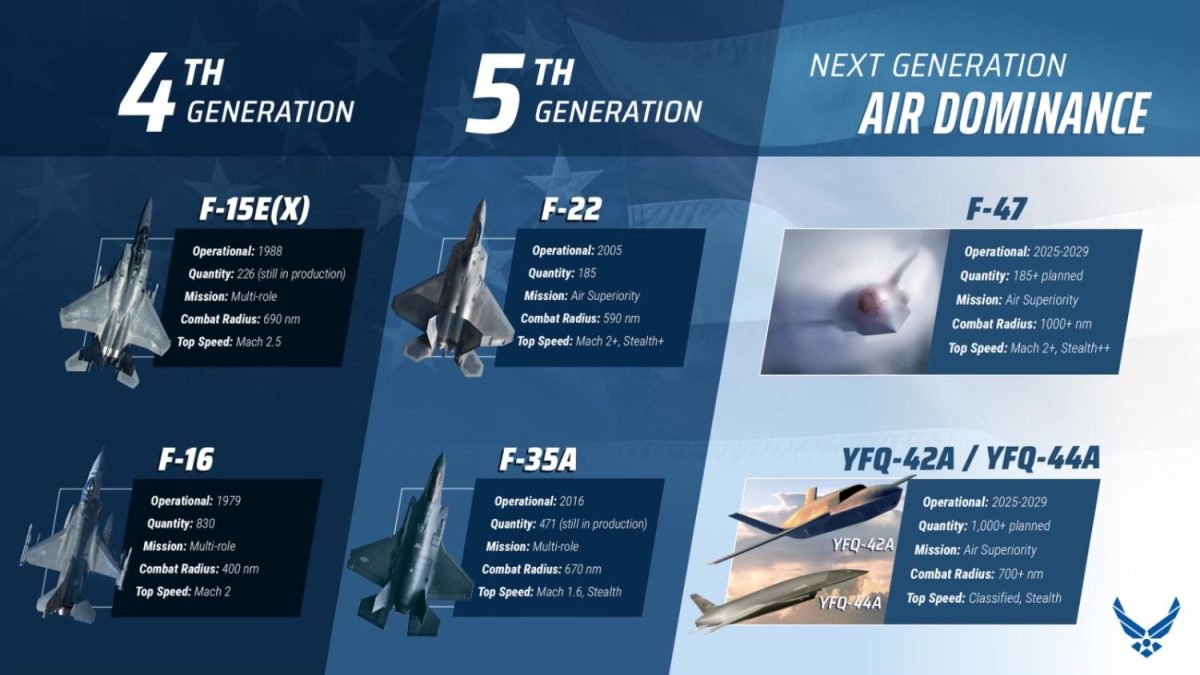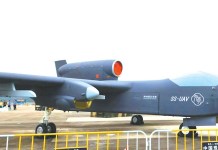Lockheed Martin is confident of developing the ‘Fifth Generation Plus’ variant of the F-35 Lightning II aircraft, emphasizing that it would be a bridge to the sixth-generation F-47, which is being developed by Boeing.
Speaking at the second quarter earnings call, Lockheed Martin CEO Jim Taiclet said, “We did bid on NGAD, and we weren’t selected.” “But the pivot that we made is one we’re taking very seriously, which is how we create a bridge from today’s fifth generation to the sixth-generation NGAD, which might not be fielded for a lot of years.”
“How do we bridge capability there?” the CEO thought out aloud, adding, “We’re going to port a lot of our own NGAD R&D over to the F-35 and potentially over to the F-22 as well.”
The comments come months after Lockheed Martin, the aviation giant that built both the US Air Force’s (USAF) fifth-generation stealth aircraft, the F-22 Raptor and the F-35 Lightning II, lost the Next Generation Air Dominance (NGAD) contest to Boeing. Lockheed’s woes were compounded as it also withdrew from the US Navy’s next-generation F/A-XX fighter jet program.
This is not the first time Lockheed Martin CEO Jim Taiclet has discussed his plans for the F-35. He first discussed the idea during an earnings call in April 2025, stating that the company can integrate 80% of sixth-generation NGAD technology into the F-35, which is already in production.
He referred to this fifth-generation plus F-35 as the “Ferrari” variant.
“We’re basically going to take the [F-35] chassis and turn it into a Ferrari,” Taiclet asserted. “It’s like a NASCAR upgrade, so to speak, where we would take the F-35 [and] apply some of those co-funded technologies both from NGAD and the F-35 program. Eventually, there’ll be 3,500 of those [F-35] chassis out there at various stages of technology and capability [worldwide]. We think we can get most of the way to sixth-generation at half the cost,” he had said at the time.
However, the latest comments appear to be made with more conviction than the last time, as they strategically position the F-35’s futuristic variant as one that would be indispensable for the USAF as it switches to the sixth-generation aircraft.
Unlike in April, when the ‘fifth plus generation’ variant was discussed as a cost-effective substitute for the F-47, Taiclet this time took a more pragmatic approach and referred to it as a bridge. This would, perhaps, be a more acceptable prospect for the Pentagon and the USAF.
The CEO said that the company’s goal is to modify the F-35 such that it can provide 80% of the effectiveness of a sixth-generation fighter at 50% of the cost per unit. The 80% figure, according to him, also includes the degree of stealth, as well as “other aspects.”
For perspective: the F-47 is envisioned to have ‘stealth++’—an advancement from the Raptor’s ‘stealth+’ and F-35’s ‘stealth’ as stated in an infographic posted by the US Air Force (USAF) Chief of Staff, Gen. David Allvin, in May 2025.
Although he provided fewer details about what the fifth-plus generation aircraft would entail, Taiclet had said at the April earnings call that he had implored his team to work on disruptive innovation and build upon the recently established internal capabilities, including AI autonomy, crewed-uncrewed teaming, and command and control systems, across the entire company.
He had also noted that Lockheed has received feedback from the USAF on its NGAD decision, which is being duly addressed.
Taiclet, at the time, stated that future fighters will require technology such as improved passive infrared sensors, which might enable the jet to identify foes farther away without revealing its location to them.
Additionally, he mentioned that the low-observable materials, geometries, and countermeasures used in the stealth technology developed for Lockheed’s NGAD bid may make it significantly more difficult for an adversary to locate the aircraft.

The most intriguing factor about the fifth-plus generation is cost. Given that the NGAD was just halted last year due to high costs and budgetary restrictions, the promises of improved capability at a lower cost are noteworthy. It was initially anticipated that the sixth-generation aircraft would cost up to $300 million each, which is three times the cost of an F-35.
Lockheed appears to be exploiting that.
According to Taiclet, “the best-value option for the US government going forward; it will be [the] only one I’m aware of that will make that bridge, for maybe 10 years” is the F-35, which is in its fifth-plus iteration.
He did not provide a timeline for this new, modified aircraft. The infographic posted by the USAF chief stated that the F-47 will become operational between 2025 and 2029, which appears to be a rather optimistic timeline, considering the complexity associated with a sixth-generation platform and the maturation of technology. Taiclet maintains that the fifth-plus generation F-35 can be fielded within the next three years.
Is U.S. Ceding Asia To China’s Ambitions? Will State Department’s Cuts Boost Beijing’s Global Clout?

Integrating advanced next-generation technology into an existing aircraft is an old-school yet highly profitable approach. Boeing did the same when it developed the F-15EX, which was based on the F-15, outfitted it with the latest cutting-edge technology, and branded it as a 4.5th-gen fighter jet.
Notably, Taiclet’s comments come at an opportune moment as the relevance of the F-35, the delays in its deliveries, and the rising cost have increasingly been called into question.
The CEO did not discuss in detail the type of sixth-generation technology upgrades that will be implemented in the F-22 Raptor. However, we know that the Raptor, which was to be replaced by the F-47, is currently slated to receive upgrades aimed at keeping it combat-capable for at least another decade or more.
Lockheed CEO Praises F-35
The plans by Lockheed come even as it is already working on upgrading the F-35 to Block 4 standard, which has been plagued by delays and software-related troubles.
The specific features of the Block 4 upgrade have not been disclosed, and the F-35 TF3 configuration, which forms the basis of Block 4, has been backlogged for delivery. Lockheed is also analysing what would make up Block 5 and subsequent upgrades.
While Lockheed Martin started manufacturing F-35s in the TR-3 configuration in the summer of 2023, the government refused to take delivery until TR-3 developmental testing was finished. After a year’s halt, the Joint Program Office (JPO) Director, Lt. Gen. Michael Schmidt, allowed the deliveries to resume in July 2024.
Notably, the manufacturer has now delivered 207 F-35s since resuming deliveries last year. Moreover, it has delivered 50 F-35s in the second quarter, bringing the total number of deliveries for the year to 97. Lockheed has reportedly stated that it is planning to deliver about 170 to 190 F-35s this year, as noted by the company’s CEO.
The deliveries come as the relevance of the aircraft has been called into question by several quarters, especially US billionaire and SpaceX owner Elon Musk, who has described the aircraft as outdated in the age of unmanned aircraft that are now proliferating on modern battlefields.
However, the aircraft’s defenders have consistently argued that there is no alternative to a manned combat aircraft.
Heaping praises on the F-35, Taiclet pointed to the aircraft’s performance in Operation Midnight Hammer, where the USAF bombers struck Iran’s nuclear facilities in June 2025. Taiclet emphasised that the mission was led by the F-35 and F-22, adding that these fighters provided air dominance and defense suppression required for the bombers to reach Iran’s hardened nuclear sites.
“Our platforms operated essentially undetected in highly defended and contested airspace, underscoring the value of advanced stealth, superior electronic warfare, and broadband communications capability,” he asserted. Thus, underscoring the utility of these jets in combat.
Taiclet further said that the F-35 has demonstrated exceptional proficiency in the “orchestration of numerous other platforms” in addition to air-to-ground maneuvers during recent Middle Eastern conflicts. These additional platforms have comprised space and maritime assets, as well as various aircraft, including fourth-generation aircraft.
- Contact the author at sakshi.tiwari9555 (at) gmail.com
- Follow EurAsian Times on Google News




